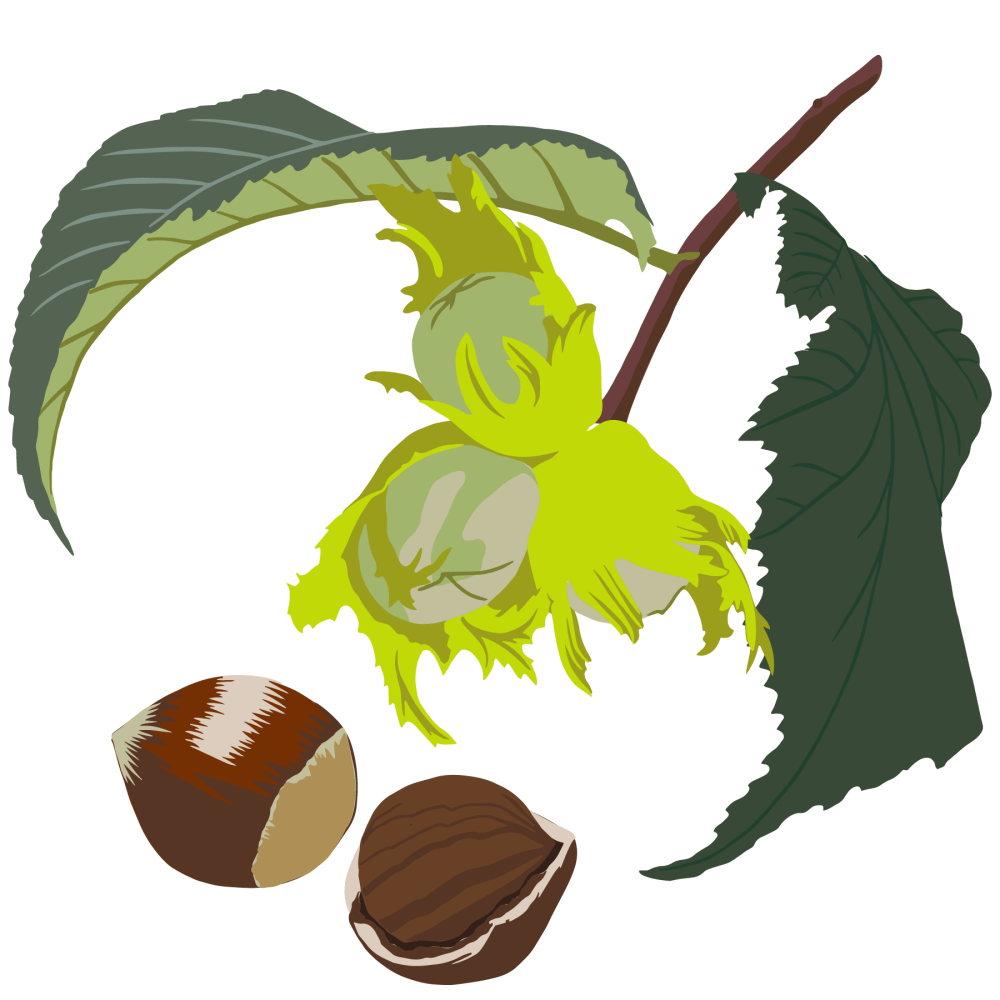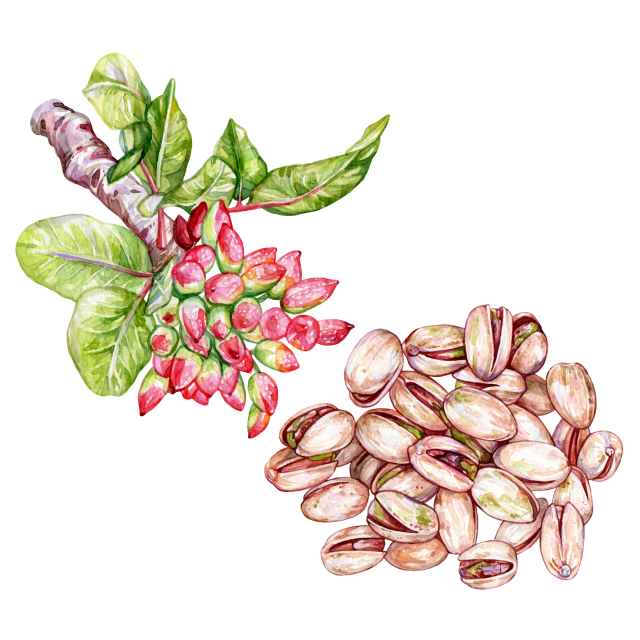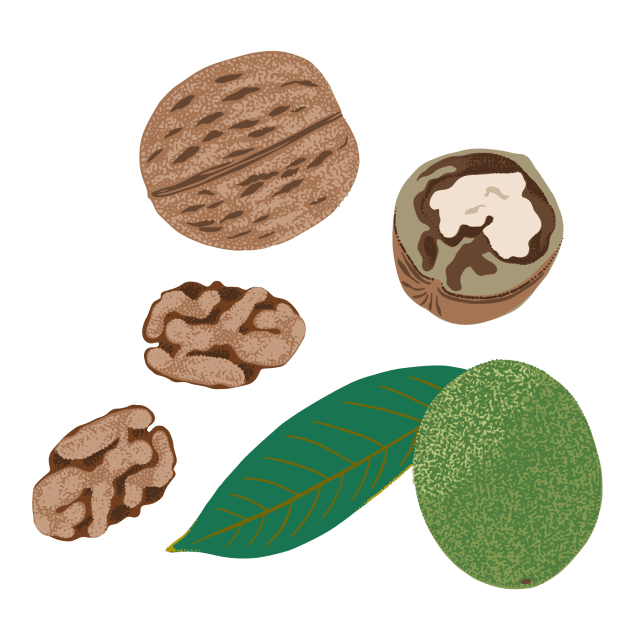Hazelnut

Latin name: Corylus avellana
Other names: filberts, cobnuts
Uses: nut, flour, confection, beverage, alcohol
What are hazelnuts?
Hazelnuts grow on small trees in the birch family. Their shells look a bit like acorns, with one end rounded and the other somewhat pointy.
Why are hazelnuts healthy?
Rich in dietary fiber, vitamins, and minerals, hazelnuts also contain several mono-unsaturated fatty acids which can help decrease bad cholesterol and raise good cholesterol levels in the blood. Additionally, they’re excellent sources of folate and and vitamin E, and may prove to be beneficial in protecting against neurological diseases like Parkinson’s and Alzheimer’s.
What do hazelnuts taste like?
Hazelnuts are nutty (obviously) with a creamy sweetness and crunchy texture. Raw hazelnuts are almost milky, with a grassy undertone that makes them ideal for turning into a nondairy beverage. The signature warm, brown hazelnut flavor comes from an organic compound called filbertone, which has a toasty, slightly chocolatey aroma.
How do I use hazelnuts?
If you want to remove the hazelnuts’ skins, toast the nuts in the oven and then rub the skins off with a kitchen towel. Hazelnuts are delicious with autumn foods like figs, chanterelles, beets, pears, and winter squash. Their warm, buttery flavor is also effective at balancing pungent cheeses and the bitterness of coffee and dark chocolate (and homemade chocolate-hazelnut spread is super easy to make). Hazelnuts are widely used in European pastries and candies but look to Mediterranean and Middle Eastern desserts, too.
What do hazelnuts pair well with?
Pair hazelnuts with dates and honey, use them in halva, or add them to tahini brownies (their nuttiness goes well with sesame). Don’t be afraid to use hazelnuts instead of pine nuts in pesto or sprinkled into cacio e pepe — they love garlic, Parmesan, and black pepper.
Where do hazelnuts grow?
The tall, shrubby plant grows in forest understories and hedgerows across their native range throughout Europe and western Asia. Today Turkey grows the vast majority of the world’s crop.
How to buy hazelnuts:
If you’re buying hazelnuts in the shell, opt for specimens that are heavy for their size, or choose firm, plump shelled nuts with smooth skins (avoid any wrinkly nuts). Roasted hazelnuts are best stored in an airtight container in the freezer until you’re ready to use them, as they can go stale and rancid fairly quickly.
Fun hazelnut fact:
Though Oregon is famous for its hazelnuts today, their commercial success was initially because of meat rationing during World Wars I and II. Wartime cookbooks offered recipes for meatless “meat loaf,” and other savory nut-based mains, and home cooks could also look to so-called hygienic (health food) cookbooks for advice on making filbert “sausages” and the like.




